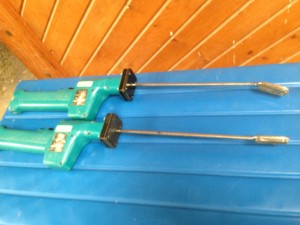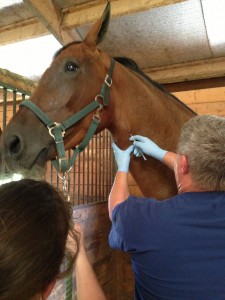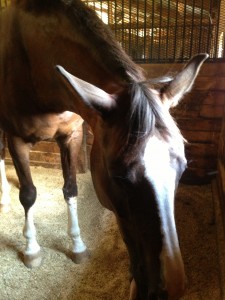Leave a Comment:
2 comments
Thanks Tomas, I believe dental problems affect training as well. Along with good saddle fit, these are often neglected and easily rectified.
Reply
If you are like me, you probably dread going to the dentist. The scraping of plaque and the high pitched screaming of the polishing equipment or drill is enough to make even a routine cleaning set your teeth on edge.
So what if you had to take all noise and anxiety and magnify it by a hundred? Which is about how a horse feels about his visit from the equine dentist.
A horse is born with 24 deciduous or baby teeth and by the age of five has 36-44 permanent teeth. Starting at the age of six months, humans develop approximately twenty baby teeth and end up with 32 adult or permanent teeth.
Horse and cow teeth continue to grow throughout their lifetimes. Dental problems in the horse can range from improper or painful bit fitting to eating and digestive issues. One of the main issues facing the aged horse is his inability to properly masticate food and hay. Over time, improper digestion of feed leads to poor health and the inability to gain or maintain weight.
Most equine dentists are veterinarians, who have received further training in the field of equine dentistry. My horses usually require a teeth, “floating,” yearly to every eighteen months.
When I first started out with horses, the equine dentist would manually use a, “float” or essentially file off the sharp edges of the teeth that develop over time with improper chewing. As with most things, equine dentistry has evolved into a highly specialized field, essential in the maintenance of the performance horse. Equipment and methods have improved as has the process of making the procedure as stress-free as possible.
 Common dental problems include:
Common dental problems include:
1. Hooks: When a horse has an overbite (common) the premolars in the upper jaw will develop a sharp point or hook causing painful bit-ting problems.
2. Ramp: similar to hook but in the lower jaw.
3. Step mouth: When a tooth is either missing or compromised, the tooth from the opposing jaw will fill in the space essentially locking the jaw. This results in the inability of the horse to move his jaw back and forth and masticate food properly.
4. Wave mouth: Similar to steps but with more than one tooth compromised and less extreme in angle.
5. Shearing: Uneven wearing of the teeth usually resulting in sharp points developing on the outside of the teeth causing pain and damage to the mouth tissue surrounding it.
As you can see, the horse’s teeth over time can face a slew of problems. Bit symptoms may include something as mild as tossing of the head to grinding the teeth while under saddle. More symptomatic are dribbling of grain, unusual chewing patterns and balling of hay. These symptoms can be alleviated with careful monitoring and routine dental exams by your licensed veterinarian.
Remember the horse is a flight or fight creature and when you attempt to put an electric drill with a rather long file into his mouth, he becomes particularly uncooperative and prong to injuring either himself or you. I highly recommend using a licensed equine practitioner with specialized dental training to ensure quality care and the safety of the horse.
 Sedation is key to providing a stress-free experience for the horse as well as safety for the practitioner.
Sedation is key to providing a stress-free experience for the horse as well as safety for the practitioner.
 Joliet sleeping off the after-effects. Within the hour she was eating and drinking with no residual issues.
Joliet sleeping off the after-effects. Within the hour she was eating and drinking with no residual issues.
My thanks to Dr. John Haggard DVM of Eudora Animal Hospital for allowing me to photograph the dental procedures.
http://www.mwveterinaryservices.com/dental-abnormalities.html
Thanks Tomas, I believe dental problems affect training as well. Along with good saddle fit, these are often neglected and easily rectified.
Reply